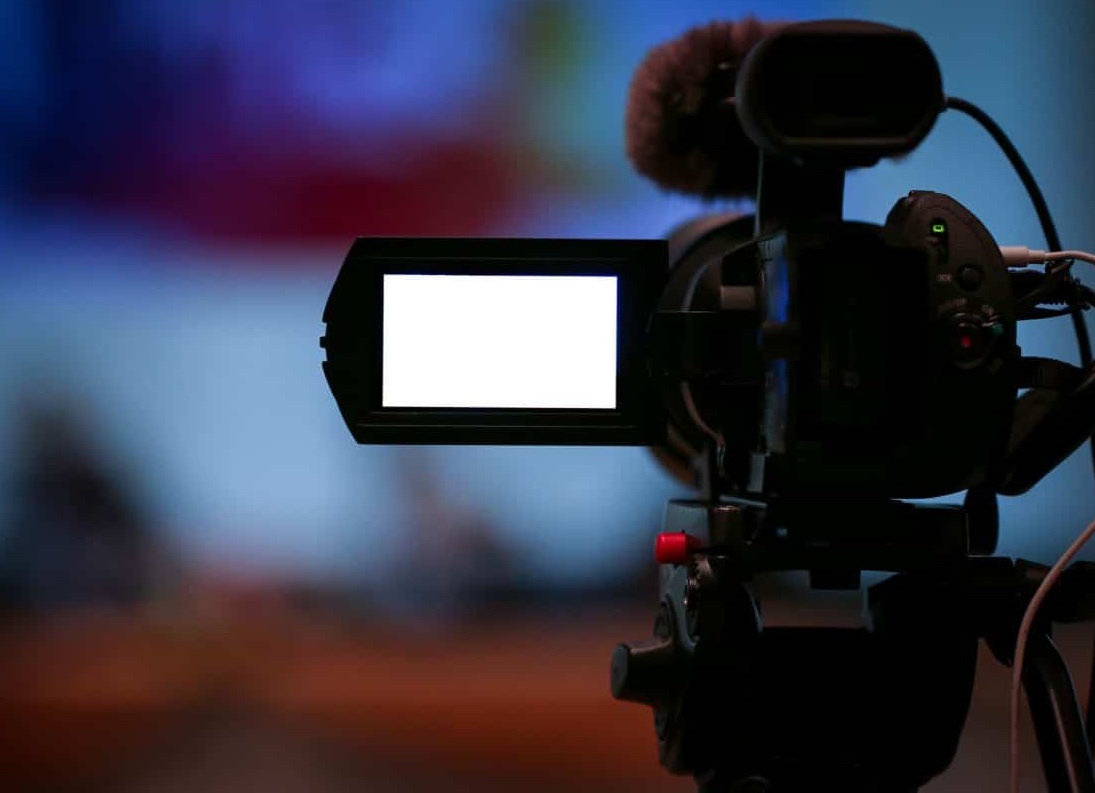What is digital media?
Digital Media differs from traditional media primarily because it relies on connecting to the internet to enjoy the content. You’re consuming digital media whenever you open web-based systems and apps on your computer, tablet, or smartphone. Streaming videos, articles, adverts, music, podcasts, audiobooks, virtual reality, and digital art are all examples of how digital media is used in our daily lives.
Nowadays, most people carry a smart phone that can access the internet wherever they go, at home, at work, or out to dinner. Advertisers take advantage of the popularity of digital media by promoting brands through online channels such as social media, search engines, websites, and apps. Here are some of the benefits digital media advertising can offer over traditional television advertising,
Digital media is cheaper.
Digital marketing is significantly cheaper than TV advertising. The cost of a 30-second TV commercial can range from £2000 to £100,000 when factoring in production costs. The rates that the biggest tv stations charge for prime-time ad slots can be staggering. In contrast, advertising banners that appear on websites using a pay-per-click model typically have cheap set-up costs. Businesses pay anything from a few pennies per click to at most a pound or two. Digital marketing companies can charge as little as £250 per month for developing an email marketing strategy, typically costing between 5p – 30p per email. Businesses usually expect to pay around £2000 – £10000 per month for a comprehensive plan covering all aspects of digital marketing. That is much less than paying £30000 for a single 30-second advertisement on ITV at peak times.
Digital marketing reaches a target audience.
With traditional TV advertising, you can reach anyone who turns on the TV, but It can be challenging to target your intended audience. The only way to understand a TV channel’s audience is through ratings provided by independent research panels such as the Broadcasters Audience Research Board, or BARB for short. These ratings estimate the percentage of the desired demographic on a particular channel through statistically relevant sampling. The main disadvantage to TV ratings provided by BARB is that they are estimates of audience demographics, not exact figures. Television advertisers must pay to advertise to everyone who views the channel, not just their target audience. Although tv ads cast a wide net, they can be a less efficient way of spending your ad budget.
Have you ever wondered how Facebook, Google and Amazon have a ‘sixth sense’ about the adverts appearing on our screens that mysteriously reflect our interests? Digital media, on the other hand, can record data on an individual level. Through cookies and collecting data on search engine queries, marketers can use greater precision and personalisation to determine which ads appear on a person’s screen. Online companies can store information on every search query and purchase customers make when they visit their websites. What’s more, companies often make deals to share this data with advertisers to help create personalised promotional content that appears to target individuals precisely. This strategy represents the best way to target someone who might be interested in your product by using data to select those who have a history of searching for similar products and related information.
Digital marketing is more agile.
All aspects of an advertisement on digital media can be tracked and measured. With analytics, marketers can track user behaviour in great detail, including how often they open emails, click on links and spend time on web pages. Because of this, businesses can adjust marketing campaigns in real-time to become more effective.
Google Analytics is the most popular tool for measuring marketing performance. Marketers can customise its uses in virtually endless ways to count the number of unique visitors to a website, which keywords bring in users from search engines, how users navigate your website, and so on. These statistics, in combination with Click Through Rates (CTRs) and the rate of conversions into purchases, can be measured to provide an unprecedented amount of helpful feedback. Marketers with good, accurate analytics and the knowledge to interpret them can quickly cut campaigns that aren’t working and build better campaigns around proven concepts. Changing these ads’ wording, colours, and filters rapidly and cheaply is possible. Analytics will not only measure your campaigns over time; the results can be used to inform and improve them as well.
On the other hand, a TV advertisement requires time to process the feedback loop. It has to be produced and then aired on TV for a certain amount of time to correctly measure its effectiveness at generating sales. Companies cannot easily adjust TV ads or reproduce them affordably, and necessary alterations require more time and money. The only solution for television advertising is to make several versions of the same ad during production.
Video ads are online now, too.
TV used to be the only household device that could display video content. The slow download speeds of dial-up internet meant that bandwidth constricted digital advertising to banners at the sides, top or bottom of a website or app. Over time, broadband internet became widespread, and the amount of data that could be transmitted increased exponentially. Online video advertisements have become commonplace, and quality and fidelity are improving with time. Today, video adverts online can be shown in higher definition than HDTV cable channels which usually cap their broadcasts at 1080p.
Online video ads are a serious competitor to TV. It’s a familiar way of telling a story on a medium experiencing an explosive rise in popularity, and advertisers have rapidly developed increasingly versatile strategies to present promotional content. Online videos can offer a level of interactivity simply not possible on television, and how advertisers utilise this opportunity to increase engagement with potential customers is limited only by their creative imaginations.
Types of Digital Marketing
The following are some of the most popular digital marketing strategies unavailable to television advertisers.
Search Engine Optimisation (SEO)
Businesses utilise SEO to increase search engine traffic to a business’s website. By optimising keywords and phrases that consumers use to search for information online, SEO marketers create content that exploits the Google search algorithm to boost a brand’s website higher up on the google search results. A brand that appears in the first few results is guaranteed to get more traffic than a page that appears fifty results down the list.
A good SEO strategy encompasses many factors, from optimising your website’s keywords, how other websites link to it and even how your website is designed. What websites can do to improve their search engine rankings depends on Google and its most current algorithm. Still, skilled SEO is guaranteed to bring many more potential customers to a website.
To compare, optimising television advertising can be extremely costly. There is never a guarantee that maximising an ad’s effectiveness will translate into sales generated. What’s more, to make sure a commercial gets seen by a broader demographic, the cost of purchasing air time on the most popular channels at peak times rises exponentially, far higher than the cost of employing any SEO company.
Pay-per-Click (PPC)
Pay-per-click refers to paid advertisements and promoted results on search engines. It is a form of short-term digital marketing to increase a business’s online traffic. Pay-per-click ads typically appear at the top and sides of search results pages, as banners on websites, at the start of YouTube videos, or in mobile apps. As the name suggests, businesses only pay per click, and the cost of running a PPC campaign is typically charged only when someone clicks on your ad and visits your website. Pay-per-click advertising allows you to spend virtually any amount of money. The cost of pay-per-click may be a few hundred dollars a month for some smaller companies, but established brands can rack up expenses well into the tens of thousands due to their popularity.
Your keywords’ competitiveness primarily determines the cost of running an ad or promoting your search results. A keyword searched by many people that websites seek to be recognised for will likely cost more, while a keyword with low competition will probably cost much less.
A pay-per-click campaign allows the option to show promoted results worldwide or within a specific region. In essence, local businesses can tailor who sees their advertisements based on location, so they won’t waste ad budgets advertising to users who don’t live near their establishment.
The critical point advertisers should consider when comparing a PPC campaign to a television advert is that a click immediately signifies a level of interest in a product or brand. Instead of paying huge sums to generate interest in a product or service, they pay for visitors who have already demonstrated their desire to know more about a brand. In no way does television advertising allow for such flexible payment options.
Social Media Marketing
Creating a presence on social media is essential for businesses, but marketers need to use it in a strategic and integrated way. Companies need to comprehend many aspects of social media marketing rather than simply posting on social media channels and responding to comments.
Analysing the performance of social media posts and creating strategies based on the response generated is an essential part of social media marketing. Marketers can consistently track their advertising campaigns and product launches to gauge how the public will receive them. Savvy marketers will use this data to estimate a return on investment and whether it will provide any value to the company.
Social media platforms offer a free way to spread your message beyond the stereotypical relationship between brand and buyer. It provides a much closer, more personable connection where followers can converse with and give feedback to a brand. People can become part of the hype around trending products when they see other like-minded individuals commenting and subscribing.
Television advertising cannot offer this type of mutual correspondence between buyer and seller. Social media marketing, however, can build lasting relationships and get people involved with brands for free. Great TV ads that become etched into pop culture and touch people’s hearts nationwide might come along once a decade.
Content Marketing
Content marketing aims to increase brand awareness by building a content library over time and sharing information via social media and digital advertising. Ultimately, the goal is to get the reader to become a customer by providing additional sources of information that they can delve into and spend more time reading. The term “content” can refer to blog posts, digital videos, podcasts, and so on. Rather than just making one sale, content marketing is about building trust with your customers, so they feel inclined to purchase more than once.
The website’s content analytics can provide a lot of information about your customers: what are they searching for when they land on a site? Are there any subjects that make them stay on the site longer? Does a particular page make readers lose interest and navigate away from your site? In combination with other types of digital marketing, content creation can incorporate SEO into new material to widen the website’s search profile, and companies can share recent blog posts or videos on social media and via email.
When compared with PPC, content marketing is a more long-term approach. By building up a library of information over time, websites can attract a broader spectrum of users through search engines. Furthermore, your content library helps promote your site as an information resource and increases the brand profile. When done right, a website with a comprehensive content library will be remembered as a leading authority in the field, whom customers trust for reliable information.
Mobile Marketing
You can use mobile marketing to reach your target audiences on their smartphones or tablets by using text messages, social media, websites, emails, and mobile applications. According to national statistics, the average consumer now spends five hours a day looking at their phone. That figure represents a staggering 20% increase over five years. Among the apps that consumers spend the most time on are Netflix and Hulu, Facebook’s mobile app, other social and messaging apps, and gaming apps. It is estimated that 45% of all shopping involves mobile devices, whether it’s to research, compare prices, or make a purchase. That figure rises to 57% for millennials because younger generations have grown up with lives integrated with smartphones and digital technology.
Advertisers know that you need to reach your customers where they are; as research suggests, your potential customers are on their phones. The primary advantage mobile marketing offers over television advertising is that it allows a seamless transition from advertisement to purchase that can be made with just a few taps on one device. Television advertising always represents a multi-stage selling route. Most people can’t make purchases through a tv alone; they watch an advert and then decide whether to visit the shops, make a telephone inquiry or visit a brand’s website.
Bottom Line
The internet has become the place to go for entertainment, communication and shopping. Not only this, but digital technology remains at the cutting edge of development and innovation, and businesses and marketers are constantly finding new ways to stay ahead in this ever-changing environment.
Television is a beloved part of everyday lives and is the easiest guaranteed method to reach the broadest number of people. However, digital media is a crucial part of any marketing strategy. It offers opportunities for smaller businesses to reach out to potential customers for a minimal price and flex their creative muscles like no other. Advertising on digital media is a natural fit, and the term ‘watch this space’ has never been so apt.




